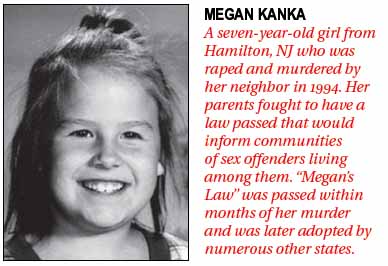Megan’s Law Map and History

We try to keep our community as safe as possible. One way is by providing the Megans Law map so you can tell if there is a sex offender in the area where you live or learn or play.
The Milpitas Police Department is committed to keeping its community as safe as possible.
The Special Investigations Unit (SIU) sergeant coordinates the Milpitas Police Department’s responsibilities with respect to Megan’s Law. Any concerns or questions regarding Megan’s Law or other SIU related matters should be directed to the SIU sergeant at 408-586-2400.
California Megans Law Map Website
Informational Only. The California Department of Justice has not considered or assessed the specific risk that any convicted sex offender displayed on this website will commit another offense or the nature of any future crimes that may be committed.
History of Megan’s Law
By Charles Montaldo
Updated November 06, 2019
Megan’s Law is a federal law passed in 1996 that authorizes local law enforcement agencies to notify the public about convicted sex offenders living, working or visiting their communities.
Megan’s Law was inspired by the case of seven-year-old Megan Kanka, a New Jersey girl who was raped and killed by a known child molester who moved across the street from the family. The Kanka family fought to have local communities warned about sex offenders in the area. The New Jersey legislature passed Megan’s Law in 1994.
In 1996, the U.S. Congress passed Megan’s Law as an amendment to the Jacob Wetterling Crimes Against Children’s Act. It required every state to have a sex offender registry and a notification system for the public when a sex offender is released into their community. It also required that repeat sex offenders receive a sentence of life in prison.
Should Megan’s Law be abolished?
Debating points pro and con on the effectiveness and fairness of Megan’s Law.
